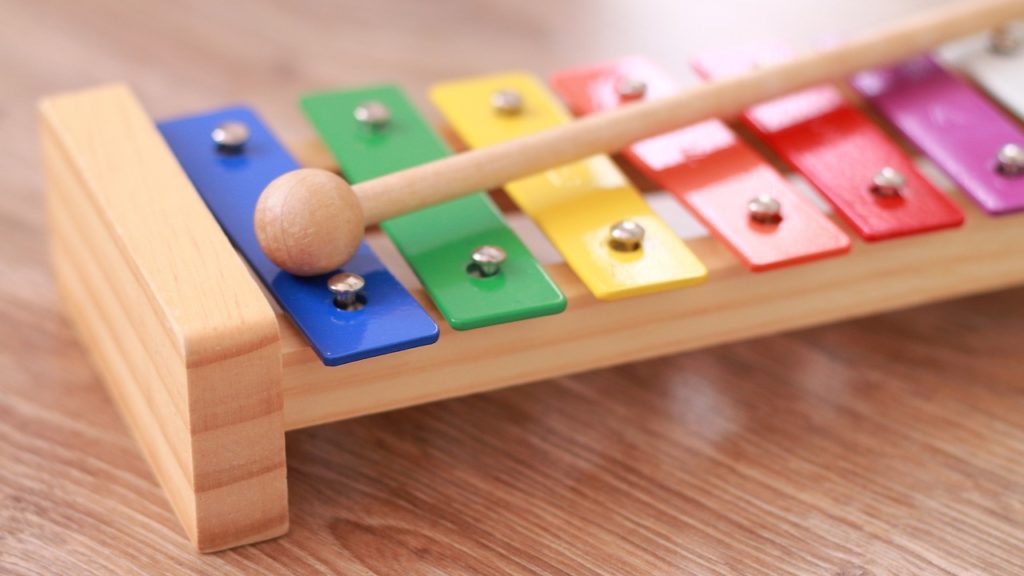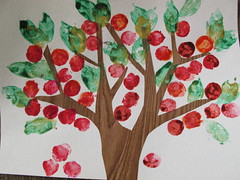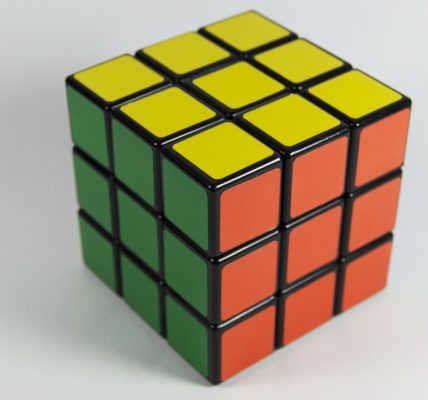
The Power of Music and Play
Music has always had a special place in the lives of children. It has a unique ability to captivate their attention, evoke emotions, and ignite their imaginations. Incorporating music into playtime can be a wonderful way to engage children and enhance their development. Let’s explore the importance of music in a child’s development and the benefits of music games for kids.
Importance of Music in a Child’s Development
Music plays a vital role in a child’s overall development. It stimulates various areas of the brain, including those responsible for language, emotional processing, and creativity. When children engage with music, they are exposed to rhythms, melodies, and lyrics, which help develop their auditory and linguistic skills. It also provides an avenue for self-expression and fosters emotional intelligence.
Furthermore, music can enhance cognitive abilities such as memory, attention, and problem-solving skills. Learning to recognize different sounds, patterns, and tones in music can support the development of critical thinking and auditory processing abilities.
Benefits of Music Games for Kids
Introducing music games into a child’s playtime can offer numerous benefits. These games not only provide entertainment but also promote various aspects of their development. Here are some key benefits of music games for kids:
- Social and Emotional Development: Music games encourage interaction, cooperation, and teamwork, helping children develop important social skills. They also provide a platform for self-expression, allowing children to explore and express their emotions in a safe and enjoyable way.
- Language and Communication Skills: Singing songs and participating in music games helps children improve their vocabulary, language comprehension, and pronunciation. This can have a positive impact on their communication skills and literacy development.
- Motor Skills Development: Many music games involve movement and dancing, which can enhance a child’s gross motor skills, coordination, and balance. Playing instruments or using props in music games can also improve fine motor skills and hand-eye coordination.
- Cognitive Development: Music games stimulate cognitive functions such as memory, attention, and problem-solving. Remembering lyrics, following rhythmic patterns, and recognizing melodies all contribute to the development of cognitive abilities in children.
- Creativity and Imagination: Music games ignite the imagination and foster creativity. Children can explore different sounds, create their own lyrics, and invent dance moves, allowing their imagination to soar.
By incorporating music into playtime through engaging games, parents can provide a rich and stimulating environment for their children’s growth and development. Music games not only entertain but also offer a wide range of benefits that support children’s social, emotional, cognitive, and physical development.
Next, we will explore some popular music games for kids that are sure to bring joy and laughter to playtime. Stay tuned! In the meantime, if you’re looking for more fun games for kids, check out our articles on cooking games for kids, party games for kids, board games for kids, card games for kids, math games for kids, puzzle games for kids, animal games for kids, word games for kids, and memory games for kids on our website.
Musical Chairs
Musical Chairs is a classic music game that has been enjoyed by children for generations. This exciting and energetic game not only encourages physical activity but also enhances children’s listening skills and ability to follow instructions.
How to Play Musical Chairs
To play Musical Chairs, you will need a group of children and a set of chairs – one less chair than the number of participants. Here’s a step-by-step guide on how to play:
- Arrange the chairs in a circle, facing outward.
- Instruct the children to walk or dance around the chairs while music is playing.
- When the music stops, the children must quickly find a chair to sit on.
- The child who is unable to find a chair is eliminated from the game.
- Remove one chair from the circle and resume the game.
- Repeat steps 3-5 until only one child remains, who is declared the winner.
Musical Chairs can be played with any genre of music, making it a versatile game for different occasions. You can even create themed playlists to match the mood or the event. For example, you could have a playlist of upbeat songs for a lively party atmosphere or soothing tunes for a calm and relaxed environment.
Variations and Adaptations
To keep the game exciting and engaging, there are several variations and adaptations you can introduce. Here are a few ideas:
- Musical Statues: Instead of sitting on a chair, the children must freeze in a specific pose when the music stops. The child who can hold the pose the longest without moving is declared the winner.
- Obstacle Course Musical Chairs: Place obstacles or markers between the chairs. When the music stops, the children must navigate the obstacles and find a chair. This adds an extra layer of fun and challenge to the game.
- Numbered Chairs: Assign numbers to each chair and call out a number instead of stopping the music. This adds an element of strategy as the children have to remember which chair corresponds to their number.
Remember to ensure the game is safe and age-appropriate for the children participating. Always supervise the game and provide guidance to prevent any accidents or rough play.
Incorporating music games like Musical Chairs into children’s playtime can bring joy, laughter, and enhance their overall development. Check out our other articles on fun kids games for more exciting and entertaining game ideas to keep your little ones engaged and entertained.
Freeze Dance
One of the most enjoyable and energetic music games for kids is Freeze Dance. It combines the joy of dancing with the excitement of freezing in place when the music stops. This game is perfect for parties, playdates, or even just a fun-filled afternoon at home.
How to Play Freeze Dance
Playing Freeze Dance is simple and requires minimal setup. Here’s how to get started:
- Gather a group of children and choose a designated DJ or music player.
- Select a variety of upbeat, kid-friendly songs to dance to. You can use a playlist or let the DJ choose the songs.
- Start playing the music and encourage the children to dance and move around.
- As the music plays, periodically pause it unexpectedly. When the music stops, the children must freeze in their current poses and remain still until the music starts again.
- Resume the music and repeat the process, allowing the children to dance freely until the next freeze command.
Freeze Dance not only gets the kids moving and grooving, but it also helps develop their listening skills, coordination, and musicality. Plus, the anticipation of the music stopping and trying to hold a pose adds an element of excitement and laughter.
Adding Challenges and Themes
To make Freeze Dance even more engaging and entertaining, consider adding challenges and themes to the game. Here are some ideas to add an extra element of fun:
- Statues: When the music stops, instead of freezing in place, the children strike a pose as if they were statues. They must maintain their poses until the music starts again.
- Animal Freeze: Assign each child an animal and when the music stops, they freeze in a pose that represents their assigned animal. For example, someone assigned a lion might freeze in a fierce roar pose, while someone assigned a turtle might freeze in a slow and steady pose.
- Color Freeze: Call out a color when the music stops, and the children freeze in a pose that represents that color. For instance, if the color called out is “red,” the children freeze in a pose that reminds them of the color red. This can be a fun and creative way to engage their imagination.
- Silly Freeze: When the music stops, the children freeze in the silliest pose they can think of. Encourage them to be as goofy and imaginative as possible.
By adding challenges and themes to Freeze Dance, you can keep the game fresh and exciting for the children. It’s a fantastic way to foster creativity, imagination, and laughter.
Remember, the primary goal of Freeze Dance is for children to have fun, express themselves through movement, and enjoy the power of music and play. So put on some lively tunes, let loose, and freeze when the music stops! For more fun kids games, check out our article on fun kids games.
Simon Says
Simon Says is a classic game that combines listening skills, following instructions, and music to create an engaging and entertaining experience for kids. This game is not only fun but also helps develop cognitive and motor skills. Let’s dive into how to play Simon Says and explore how you can incorporate musical elements to enhance the game.
How to Play Simon Says
To start the game, one person takes on the role of “Simon” and gives commands to the other players. The key is that the players must only follow the commands when the phrase “Simon says” is included. For example, if Simon says “Simon says touch your nose,” the players should touch their noses. However, if Simon simply says “touch your nose” without the phrase “Simon says,” the players must not perform the action. If a player mistakenly follows a command without the phrase “Simon says,” they are out of the game.
The game continues with Simon giving a series of commands, testing the listening and reflexes of the players. The last player remaining, who successfully follows all the correct commands, becomes the next Simon for the next round of the game.
Incorporating Musical Elements
To add a musical twist to Simon Says, you can integrate music into the commands. For example, instead of just saying “Simon says touch your nose,” Simon can say “Simon says touch your nose to the beat of the music.” This variation encourages the players to sync their actions with the rhythm of the music, making it more enjoyable and challenging.
Furthermore, you can incorporate specific dance moves or actions that correspond to different songs or genres of music. For instance, Simon can say “Simon says do the robot dance to an upbeat song,” or “Simon says sway like a tree to a slow melody.” This way, the players not only have to listen carefully to the commands but also express themselves through movement, fostering creativity and coordination.
By combining Simon Says with music, you create an interactive experience that engages the auditory, visual, and kinesthetic senses of the players. It encourages them to listen attentively, follow instructions, and express themselves through music and movement.
Remember, Simon Says is a game that can be modified and adapted to suit the age and interests of the players. Get creative and have fun exploring different musical elements and variations to keep the game exciting and entertaining for everyone involved. For more enjoyable and educational games for kids, check out our articles on cooking games for kids, party games for kids, board games for kids, card games for kids, math games for kids, puzzle games for kids, animal games for kids, word games for kids, and memory games for kids. Enjoy the power of music and play!
Name That Tune
A classic music game that never fails to entertain is Name That Tune. This game challenges kids to guess the title of a song based on a short snippet or melody. It’s a fun and interactive way to enhance their music knowledge and listening skills.
How to Play Name That Tune
To play Name That Tune, follow these simple steps:
- Gather a collection of songs: Prepare a playlist of various songs from different genres and eras. You can use popular songs, nursery rhymes, or even theme songs from movies or TV shows.
- Select a player as the DJ: Choose one player to be the DJ who controls the music. They will play short segments of songs for the other players to identify.
- Play a snippet of a song: The DJ starts by playing a short snippet of a song. It could be just a few seconds or a specific part of the song, such as the chorus or the opening melody.
- Guess the song: The other players listen carefully to the snippet and try to guess the title of the song as quickly as possible. The first player to correctly name the song earns a point.
- Rotate the DJ role: After each round, rotate the DJ role to give everyone a chance to play and showcase their music knowledge.
Modifying the Game for Different Ages
Name That Tune can be adapted to suit different age groups and skill levels. Here are some modifications you can make:
- Younger Kids: For younger children, focus on familiar songs such as nursery rhymes or popular children’s songs. Play longer snippets or include visual cues to help them identify the songs.
- Older Kids: For older kids, increase the difficulty by playing shorter snippets from a wider range of genres and time periods. You can also introduce bonus points for identifying the artist or the year the song was released.
- Team Play: To encourage collaboration and friendly competition, divide the players into teams. Each team takes turns guessing the songs, and the team with the most points at the end wins.
- Musical Trivia: To make the game more educational, incorporate trivia questions about the songs or artists. Before revealing the answer, ask additional questions about the song’s lyrics, the artist’s discography, or interesting facts about the music.
By modifying the game according to the age and interests of the players, Name That Tune can be an exciting and engaging music game for kids of all ages. It not only enhances their music knowledge but also fosters teamwork, listening skills, and quick thinking. For more fun-filled game ideas, check out our articles on fun kids games.
DIY Instruments
Engaging children in music games can be even more exciting when they get to create their own instruments. DIY instruments not only encourage creativity and resourcefulness but also provide a hands-on experience that enhances their understanding of music. In this section, we will explore making simple instruments at home and creative ways to use homemade instruments.
Making Simple Instruments at Home
Creating homemade instruments is a fantastic way to introduce children to the world of music. With just a few household items, you can help your child make their own instruments. Here are some easy-to-make instruments that you can try:
| Instrument | Materials Needed |
|---|---|
| Shakers | Empty plastic bottles, rice, beans, or beads |
| Drum | Empty containers, such as coffee cans or yogurt tubs, and drumsticks (wooden spoons can work too) |
| Tambourine | Paper plates, jingle bells, and ribbon |
| Kazoo | Toilet paper roll, wax paper, and rubber bands |
| Guitar | Shoebox, rubber bands, and a cardboard tube |
Encourage your child to personalize their instruments by decorating them with colorful markers, stickers, or paint. This will add an extra element of fun and make their instruments even more special. For more ideas on making DIY instruments and other fun activities, check out our article on fun kids games.
Creative Ways to Use Homemade Instruments
Once your child has crafted their homemade instruments, the possibilities for musical exploration are endless. Here are some creative ways to use these homemade instruments:
- Jam Sessions: Encourage your child to experiment with different sounds and rhythms using their instruments. You can join in and create a family band, taking turns playing different instruments and improvising together.
- Follow the Leader: Take turns being the leader and have the other family members follow along using their instruments. This game is not only fun but also helps develop listening skills and coordination.
- Sound Scavenger Hunt: Create a list of sounds your child can make with their instruments, such as “soft,” “loud,” “fast,” or “slow.” Challenge them to find ways to create each sound using their homemade instruments.
- Accompaniment: Encourage your child to play along with their favorite songs or nursery rhymes. They can add their own musical twist by incorporating their instruments into the melody.
- Musical Storytelling: Use the instruments to create sound effects while telling a story or reading a book. This interactive activity will enhance your child’s imagination and listening skills.
Remember, the focus is on the joy of making music and exploring different sounds. Encourage your child to be creative and express themselves freely through their homemade instruments. By incorporating DIY instruments into your music games, you are providing a fun and educational experience that nurtures their love for music.
Image by Łukasz Cwojdziński from Pixabay







1 COMMENTS